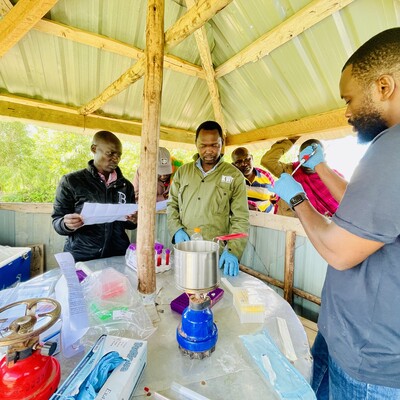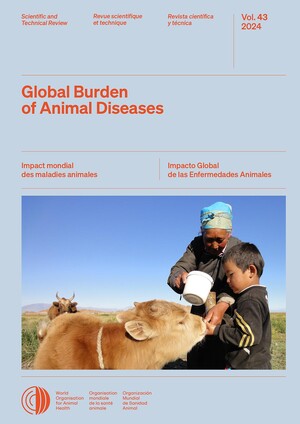
Characterization of Theileria parva specific cytotoxic T. cells
Theileria parva is a protozoan parasite causing the disease East Coast Fever in cattle with major economical loses as a result in Central and East Africa including Kenya. Live vaccines exist but problems regarding requirement of cold chain and difficult production procedures, makes it an attractive possibility to develop a subunit vaccine. In the process of developing a more suitable vaccine than the present live vaccine, it is essential to generate a profile of the CD8 killer cells, which is the cell type responsible for protecting the animal from the parasite. This profile can be used as a “golden standard” during the development of a subunit vaccine. Live vaccine immunized animals will be used for this. The profile generated from live vaccine immunization can be regarded of as a “fingerprint”, which we are aiming to reach during the generation of a subunit vaccine. The specific CD8 killer cells (CTL) will be stained using tetramers in FACS analysis. Co-staining with antibodies for other markers such as activation markers, memory markers and cytokine will be performed. This will be done as a time course experiment such that samples will be taken at different time points after immunization. This makes it possible to follow and estimate the duration of the CTL response. A quantitative RT-PCR will be set up for measuring the cytokine response in different subpopulations of cells. CD8+ cells and subpopulations will be sorted and the expression of selected cytokines will be determined. Furthermore, the killing potential of different subpopulations of cells will be performed in order to estimate the fraction of the killing potential that can be accounted for by the CD8+ cells.
Objectives:
The overall objective of the project is to generate a profile of the specific CD8 cells, generated towards T. parva regarding cytokine expression, surface activation markers and memory markers from cattle immunized with the live vaccine. This profile can be used as a guideline for what should be obtained during the generation of a subunit vaccine. The killing potential of different subpopulations of cells, CD8 T-cells, γδ T-cells and CD4 cells will be estimated in order to determine if other populations contribute substantially to the killing of parasite infected cells.
Location: Kenya
Outputs:
1. One or two peer-reviewed paper. The number is dependent on the results and the quality of the journal.
2. Generation of an immunological profile of T.parva specific CD8 cells. Generation of a profile for T.parva specific T-cells which can be used as a standard during the development of a subunit vaccine.
3. Estimation of the killing potential of T.parva infected cells by different T-cell subsets. The percentage killing potential of different T cell subpopulations will be estimated in order to generate knowledge of exact contribution of the different cell types to the killing.
Contact: Lucilla Steinaa
















